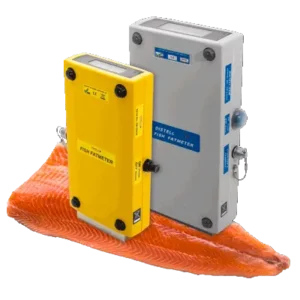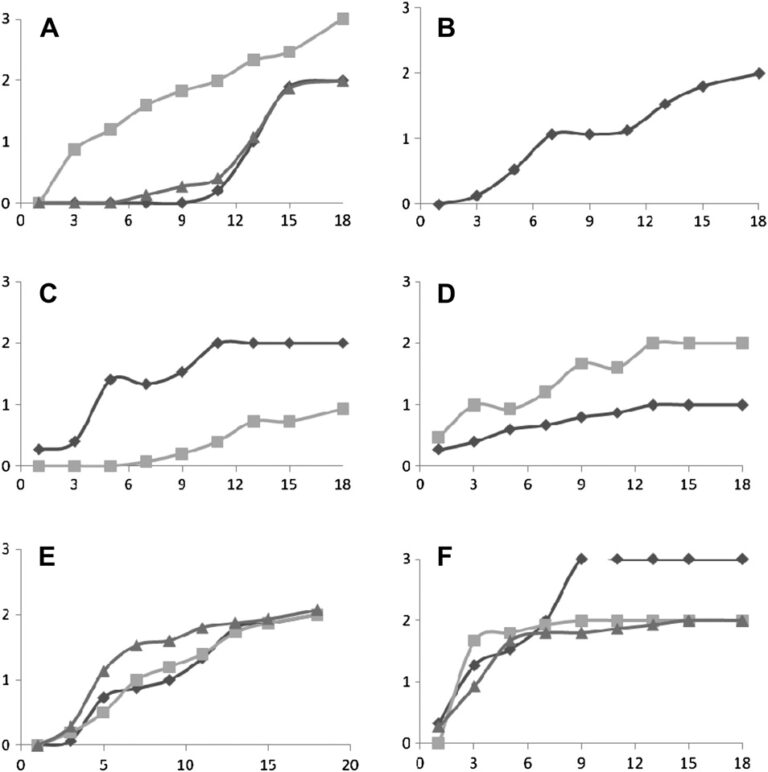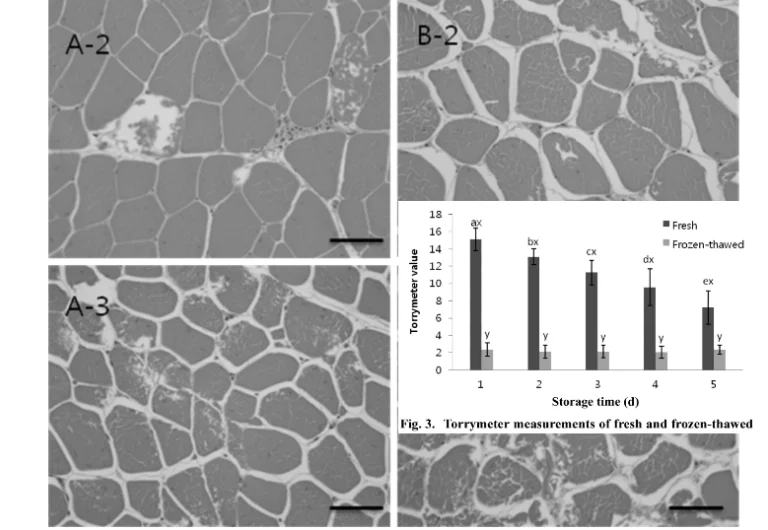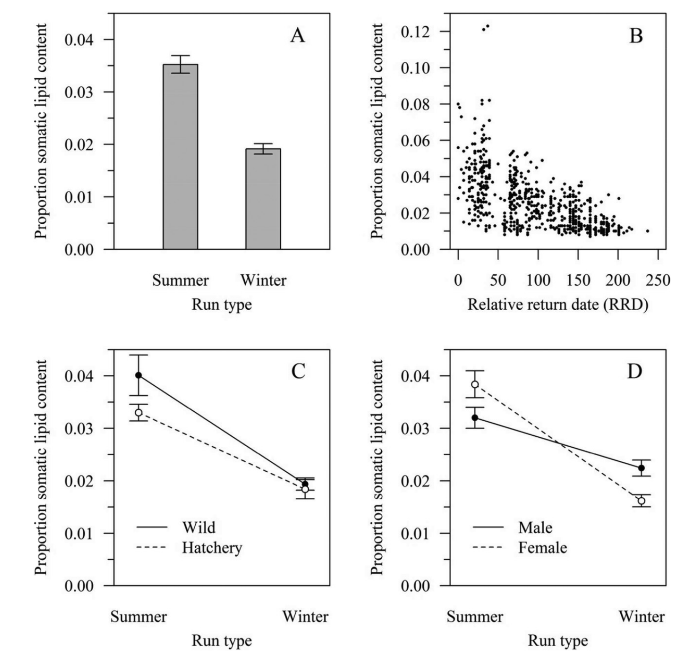Quality and production trait genetics of farmed European Whitefish (Coregonus lavaretus)
| Title | Quality and production trait genetics of farmed European Whitefish (Coregonus lavaretus) |
| Written by | A. Kause, C. Quinton, S. Airaksinen, K. Ruohonen, J. Koskela |
| From | MTT Agrifood Research Finland Finnish Game and Fisheries Research Institute, Finland |
| Published | November 11, 2010. |
| Fish Species | farmed European whitefish (Coregonus lavaretus) |
| Key Words | aquaculture, heritability, lipid, quantitative genetics, selective breeding, survival |
What the research is about
This research examines the use of the Fish Fat Meter in the context of farmed fish production. This research is highly relevant to industry professionals, researchers, and breeders in the aquaculture field who are interested in improving the genetic traits, such as fillet protein and lipid percentages, of European whitefish for enhanced quality and production.
Here we present phenotypic and genetic parameters for the major production and product quality traits in European Whitefish. The studied quality traits were fillet gaping, muscle texture, fillet lipid percentage recorded chemically and by the Fish Fat Meter, fillet protein%, fillet color lightness, and condition factor, and the studied production traits were harvest weight, gutted weight, carcass% of wet weight, fillet% of gutted weight, maturity age, and survival.
The 4 topics of interest were to estimate:
1) heritabilities for quality traits including fillet composition, fillet texture, fillet gaping, and color; and to estimate genetic correlations.
2) between fillet lipid percentage and other quality traits.
3) between quality and growth
4) between quality and carcass and fillet yield, maturity, and survival.
The Fish Fat Meter, a tool used for measuring fillet lipid percentage, plays a crucial role in understanding the genetic improvement potential and optimizing the production of farmed European whitefish. In this article, its use is explored, providing valuable insights for the target audience.
The Fish Fat Meter addresses several challenges in the production of farmed European whitefish. One of the primary objectives of fish farming is to convert feed into muscle and protein growth, minimizing excessive lipid accumulation and slaughter waste. However, achieving the desired fillet and body protein percentage is challenging for breeders.
The Fish Fat Meter serves as a reliable indicator for fillet lipid percentage, allowing breeders to accurately and non-destructively measure lipid content in live individuals. This information enables breeders to make informed decisions regarding breeding selection and optimize production by reducing fillet lipid content and maximizing protein growth.
Benefits of the Fish Fat Meter highlighted in the research are:
- Reliable Measurement: The Fish Fat Meter provides repeatable and accurate readings of fillet lipid content in European whitefish.
- Informative Genetic Insights: By measuring fillet lipid percentage, breeders can gain valuable insights into the genetic potential of fish for improved fillet and body protein percentage.
- Non-Destructive Testing: The use of the Fish Fat Meter allows for non-destructive measurement, ensuring that the fish can continue to grow and contribute to production.
- Efficient Breeding Selection: The Fish Fat Meter helps breeders in selecting fish with reduced fillet lipid content, leading to the production of fish with higher fillet protein percentage and improved overall quality.
The Fish Fat Meter is particularly useful in scenarios where breeders aim to improve the genetic traits of farmed European whitefish. For example:
- Selection Programs: The Fish Fat Meter can be incorporated into selection programs to identify and breed fish with lower fillet lipid content and higher fillet protein percentage.
- Production Optimization: By continuously monitoring the fillet lipid content using the Fish Fat Meter, breeders can fine-tune feeding regimes and evaluate the effects of different diets or rearing treatments on lipid deposition.
The Fish Fat Meter contributes significantly to the conclusion of the article by providing a reliable and non-destructive method for assessing fillet lipid content in farmed European whitefish. Its use enabled researchers to gather important data on the genetic heritability of fillet protein and lipid percentages, highlighting the importance of genetic improvement for breeders.
Furthermore, the innovative application of the Fish Fat Meter in this study establishes its potential as a valuable tool for selecting fish with reduced lipid content and improved fillet quality. By facilitating the genetic improvement of farmed European whitefish, the Fish Fat Meter contributes to advancements in aquaculture and supports the ultimate goal of producing fish with optimal protein growth and minimal lipid accumulation.
Research conclusion
Based on this research article, the Fish Fat Meter device proves to be a reliable tool in accurately measuring the fillet lipid percentage of live European whitefish. This makes it a valuable asset for breeders looking to improve fillet and body protein percentage, which are of high priority in farmed fish production. The Fish Fat Meter can also be used to select for reduced fillet lipid and to establish logical genetic relationships with production traits.
Our results proved further that the Fish Fat Meter was a reliable indicator for fillet lipid % recorded from live individuals and should be useful in the selection program. The Fish Fat Meter gave repeatable readings for fillet lipid content and moderate accuracy was achieved with 4 measurements per fish.
Previous studies have shown that the Fish Fat Meter can be used as a tool to select reduced fillet lipid and to produce logical genetic relationships with production traits.
One of the key benefits of using the Fish Fat Meter is that it provides accurate and repeatable readings for fillet lipid content with moderate accuracy after just four measurements per fish. Additionally, the device can prevent ineffective breeding by identifying the limited variation in body and fillet protein across different diets, rearing treatments, and families.
In this article, the Fish Fat Meter was used to demonstrate that fillet protein percentage should be a high priority for breeders and that condition factor is a composite trait that can affect both muscle growth and visceral lipid deposition or internal organ growth. By accurately measuring fillet lipid percentage from live individuals, the Fish Fat Meter helped provide logical genetic relationships with production traits and establish a reliable indicator for farmed fish production.
Assurant Innovations take
The Fish Fat Meter was proven to be a good tool to measure fish fat of European Whitefish in comparison with many other factors.
As innovators in the field of fish production genetics, Assurant Innovations is proud to introduce the Fish Fat Meter, a cutting-edge device that has made significant contributions to the study of farmed European whitefish genetics. This article aims to highlight the numerous benefits offered by the Fish Fat Meter and address any potential objections or skepticism from our discerning audience.
Benefits of the Fish Fat Meter in the Study:
- Accurate and Reliable Fillet Lipid Content Measurements:
The Fish Fat Meter has proven to be an invaluable tool in selecting for reduced fillet lipid content, as demonstrated by previous research (Quillet et al., 2005). In the study discussed in this article, the Fish Fat Meter provided repeatable readings for fillet lipid content and achieved remarkable accuracy with just four measurements per fish. Breeders can now confidently prioritize reducing excess lipid and slaughter waste to enhance protein growth, fulfilling the ultimate goal of farmed fish production. - Logical Genetic Relationships with Production Traits:
By using the Fish Fat Meter, researchers have established logical genetic relationships between fillet lipid content and other production traits, as mentioned by Powell et al. (2008). This invaluable insight equips breeders with the means to make informed decisions, leading to improved breeding programs and further advancements in farmed European whitefish genetics. - Reliable Indicator in Live Individuals:
Unlike traditional methods that rely on post-mortem analysis, the Fish Fat Meter offers the unique advantage of providing accurate and reliable measurements of fillet lipid percentage in live fish. This real-time data greatly enhances researchers’ ability to monitor and optimize the fish’s genetic potential throughout its growth cycle.
Benefits of the Fish Fat Meter for Potential Buyers:
- Precision and Efficiency:
The Fish Fat Meter revolutionizes traditional methods by offering precise and efficient measurements of fillet lipid content, saving time and resources for breeders and researchers. Its ability to provide repeatable readings with just a few measurements per fish ensures reliable and consistent data collection. - Improved Breeding Programs:
With the Fish Fat Meter, breeders can prioritize the genetic improvement of fillet and body protein percentage, aligning with the industry’s objective of protein growth over excess lipid accumulation. By incorporating the Fish Fat Meter into their breeding programs, they can accelerate the development of desirable traits and propel the industry forward.
Conclusion:
The Fish Fat Meter has emerged as a game-changing device, offering precise measurements of fillet lipid content and enabling breeders and researchers to make informed decisions for improved breeding programs and sustainable fish production. With its remarkable accuracy, real-time monitoring capabilities, and logical genetic relationships, the Fish Fat Meter paves the way for further advancements in farmed European whitefish genetics. Embrace this innovative tool and join us in revolutionizing the future of fish production.

Fish Fat Meter
To Purchase: Call or Email








